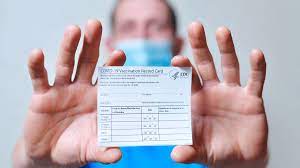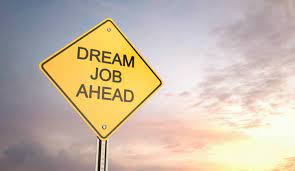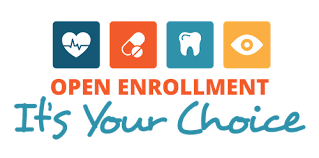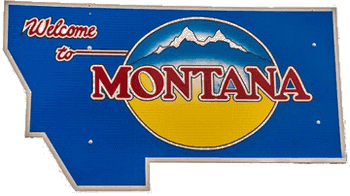 November is known as the Gratitude month!
November is known as the Gratitude month!
How do you show your employees your gratitude?!
A variety of other special days to be aware of.
November 7th brings an end to Daylight Saving Time- The suggestion of using daylight more efficiently can be traced to Benjamin Franklin. While visiting in Paris in 1784, he wrote a letter to the editors of the Journal of Paris calling for a tax on every Parisian whose windows were shuttered after sunrise to “encourage the economy of using sunshine instead of candles,” according to Michael Downing, author of “Spring Forward: The Annual Madness of Daylight Saving Time”.
November 11th celebrates Veterans- this day in 1918, is generally regarded as the end of the war to end all wars (WW1). Veteran’s Day is now a celebration for all Veterans. Benefits for hiring Veterans, Reservists and National Guard members are available to employers, ask us about it.
Open Enrollment is this month for Health Insurance.
 COVID Corner
COVID Corner
Vaccine Mandates: Businesses with at least 100 employees may soon receive direction on the anticipated COVID-19 workplace vaccination and testing mandate from the Occupational Safety and Health Administration (OSHA). On Oct. 12, the agency sent its emergency temporary standard (ETS) to the White House for final review. The regulatory office could quickly conclude its review any day now, which would prompt OSHA to publish the ETS. The ETS could take effect immediately upon publication, but OSHA generally provides businesses with a little time before they must comply. TogetHR will update clients as soon as the ETS is approved and publicized.
Delta plus variant: It’s likely that the Delta Plus variant is 10% more transmissible than the original version of delta. Officially known as AY.4.2, the “delta plus” variant is believed to be even more contagious than the highly transmissible delta variant. Remember, delta is already super contagious. So adding 10% more likely won’t change the behavior of the variant dramatically. If a variant emerges that can escape detection by antibodies, then we could potentially see a big resurgence. So far, there’s no evidence that the delta-plus has this ability.
Booster shots mandated?: For now, employment law attorneys recommend that businesses hold off on mandating booster shots. Employers should focus on raising the rate of initial vaccination rather than adding the booster on top of that. Even with this approach, she said, an employer can certainly support and encourage employees who are eligible and wish to get the booster shot. If employers expect their policies to change, Thomas suggested that they start educational campaigns. “Employers who can persuade or incentivize workers to vaccinate or get boosters will have an easier time enforcing a mandate once their policy changes. Leadership starts at the top, and company leaders will need to model the behavior they expect employees to follow.” Hermon noted that successful employers during the pandemic have made it a point to communicate frequently with their employees, using e-mail, large-scale Web calls, video announcements and any other mechanisms they have at their disposal. “Employers should continue to use those mechanisms to encourage employees to get vaccinated, to inform them about booster shot availability, and to answer questions that may arise from employees as they return to the office.”
 Employment Outlook – Lack or Workers
Employment Outlook – Lack or Workers
The labor force participation rate is projected to continue to trend down, declining from 61.7 percent in 2020 to 60.4 percent in 2030, with retiring Baby Boomers and a declining population rate reducing the number of people available to work, according to a new analysis from the Bureau of Labor Statistics (BLS). The youngest Boomers will reach traditional retirement age by 2030. The participation rate of the prime-age population (ages 25 to 54) has been slowly trending down but is expected to remain flat through 2030. The BLS found that the U.S. will add 11.9 million jobs through 2030, but that projection reflects the recovery from the 2020 recession and an abnormally low base-year employment for 2020 associated with the COVID-19 pandemic. Total employment is projected to increase about 7.8 percent by 2030, to 165.4 million jobs, equating to just over 1 million new jobs each year, about half the annual gain in the past decade.
Most employment gains through 2030 are expected to occur in the service sectors, which are projected to reach about 134.1 million jobs in 2030. This increase represents just over 95 percent of all jobs added from 2020 to 2030. Employment in leisure and hospitality is projected to grow the fastest within the service sector, largely driven by recovery from the pandemic. Restaurant cooks are among the fastest-growing occupations, for example, due to substantial employment losses in 2020. Changes ushered in by the pandemic, such as the explosion of remote work, will expand demand for jobs in information technology services and other knowledge worker categories.
On the other hand, retailers are projected to lose 586,800 jobs through 2030, the most of any sector. More than half of the industries projected to have the most rapid declines in the U.S. are in manufacturing, due to global competition and the adoption of productivity-enhancing technologies, such as robotics. Increased automation is also expected to result in declining employment for professional roles, such as office and administrative support occupations.
 Open Enrollments for Benefits
Open Enrollments for Benefits
Open Enrollment for the Patient Protection and Affordable Care Act (PPACA) is upon us- The yearly period in the fall when people can enroll in a health insurance plan for the next calendar year. Open Enrollment for 2022 runs from November 1 through January 15, 2022. Enroll by December 15 for coverage that starts January 1. Information for enrolling can be found at Healthcare.gov.
This time period also indicates to employers that a review of benefits is indicated. Companies that have benefits in place need to measure the value of money spent on such benefits. The best way to determine the return on investment is to understand employees’ opinions on the benefits they are offered. 75% of employee are more likely to stay with the employer because of the benefits package according to Willis Towers Watson in early 2020.
Employee benefits are not just another company must-have that goes unnoticed. Benefits, it turns out, have a huge effect on employee participation, performance, and overall happiness—and this is not something to disregard for your company culture.
 HB 102: Firearms in the Workplace?!
HB 102: Firearms in the Workplace?!
Montanans can carry concealed firearms in public settings, including banks and bars, without a permit. Exceptions include: correctional facilities, detention facilities, beyond TSA security screening checkpoints, buildings owns and occupied by the United State, on a military reservation, private property where the owner expressly prohibit firearms. Employers of private businesses may expressly prohibit firearm possession by posting signs. For assistance navigating this requirement, please contact your HR rep.